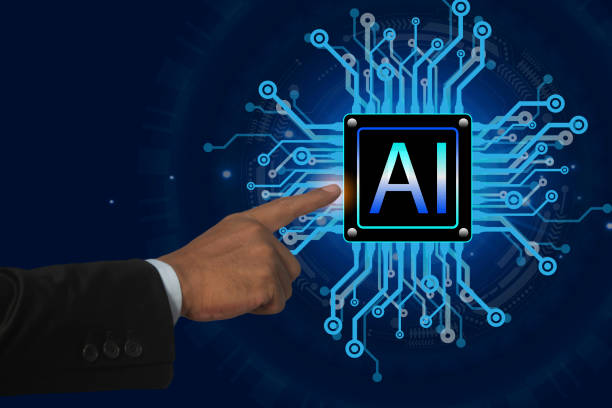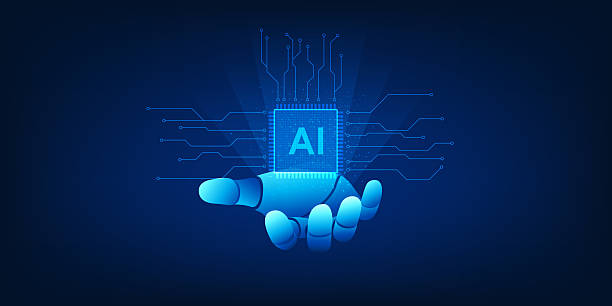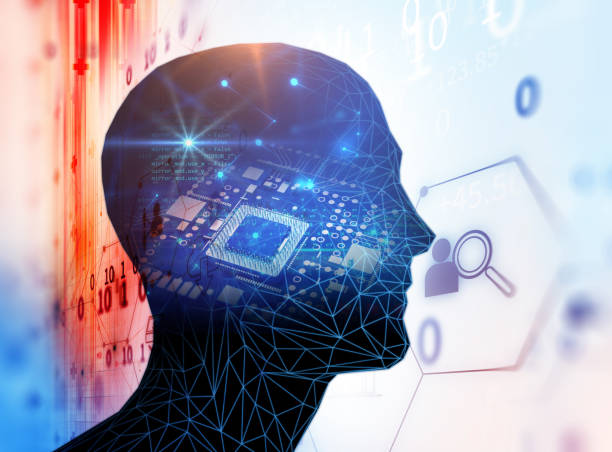What is an Artificial Intelligence Robot and How Does it Work?
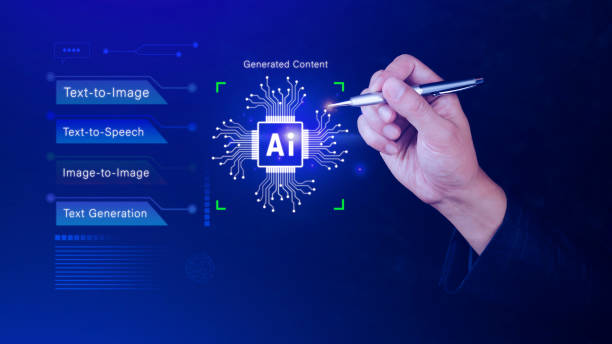
Artificial intelligence robot is a combination of two main fields: robotics and artificial intelligence.
In simple terms, an AI robot is a physical machine equipped with human-like cognitive capabilities.
These capabilities include learning, reasoning, problem-solving, understanding natural language, and even seeing.
But how is this process done?
The core of an #AI_robot’s functionality lies in artificial intelligence algorithms.
These algorithms allow the robot to analyze data, recognize patterns, make decisions, and interact with its surroundings.
Machine learning, as a subset of artificial intelligence, plays an important role in this process.
Using machine learning algorithms, the robot can learn from its experiences and improve its performance.
Sensors play a key role in collecting information from the environment.
Cameras, microphones, touch sensors, and other types of sensors provide the robot with a variety of information.
This information is then processed by artificial intelligence algorithms and used to make decisions and take appropriate actions.
In short, an AI robot, by combining data processing power, artificial intelligence algorithms, and the ability to interact with the environment, is capable of performing tasks that were previously only possible by humans.
Does your current company website present a worthy image of your brand and attract new customers?
If not, turn this challenge into an opportunity with Rasaweb’s professional company website design services.
✅ Significantly improves your brand’s credibility and image.
✅ Paves the way for attracting new leads and customers for you.
⚡ Contact Rasaweb now for a free and specialized consultation!
Applications of Artificial Intelligence Robots in Various Industries
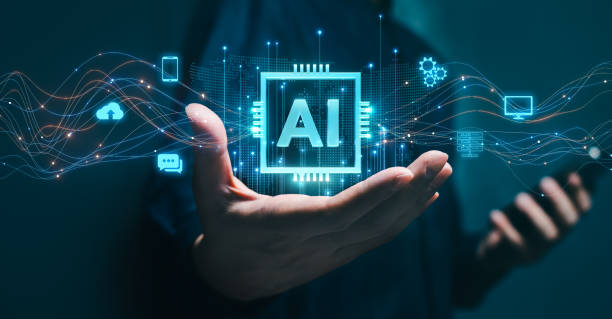
Artificial intelligence robots are rapidly penetrating various industries and creating significant transformations.
From factory production lines to hospitals and even residential homes, the footprint of smart robots is visible.
In the manufacturing industry, artificial intelligence robots are used to perform repetitive and dangerous tasks.
These robots can assemble parts with high precision and speed, package products, and even check product quality.
The use of artificial intelligence robots in production lines not only increases productivity but also improves worker safety.
In the field of healthcare, artificial intelligence robots play a role in various areas, including surgery, rehabilitation, and patient care.
Surgical robots can perform complex operations with high precision and delicacy.
Rehabilitation robots help patients regain their motor skills after injury.
Also, care robots can assist the elderly and disabled in performing daily tasks.
In addition, artificial intelligence robots are also entering residential homes.
Smart vacuum cleaners, voice assistants, and other types of home robots make life easier and more comfortable for humans.
Advantages and Disadvantages of Using Artificial Intelligence Robots
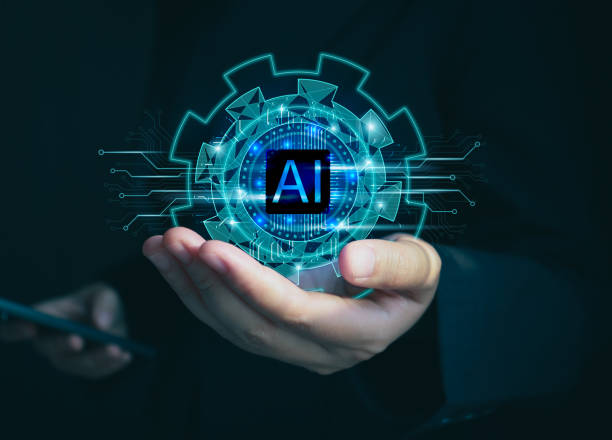
The use of artificial intelligence robots has its own advantages and disadvantages that should be carefully considered.
Advantages
- Increased productivity Robots can work continuously and tirelessly, leading to increased productivity in various industries.
- Reduced costs By automating processes, costs related to human labor and human errors are reduced.
- Improved safety Robots can perform dangerous tasks and prevent harm to humans.
- High accuracy and speed Robots can operate with higher accuracy and speed than humans.
Disadvantages
- High initial cost Setting up and implementing artificial intelligence robots requires a high initial investment.
- Need for expertise Maintaining and programming artificial intelligence robots requires expertise and technical knowledge.
- Ethical concerns The use of artificial intelligence robots can lead to job losses and other ethical concerns.
- Limitations Artificial intelligence robots still have limitations in some areas and cannot completely replace humans.
Ultimately, the decision to use an artificial intelligence robot should be made by considering its advantages and disadvantages and based on the specific needs and conditions of each industry and organization.
| Industry | Application of Artificial Intelligence Robot |
|---|---|
| Manufacturing | Assembling parts, packaging products, quality control |
| Healthcare | Surgery, rehabilitation, patient care |
| Transportation | Self-driving cars, traffic management |
| Customer Service | Answering questions, providing technical support |
What Will the Future of Artificial Intelligence Robots Be?
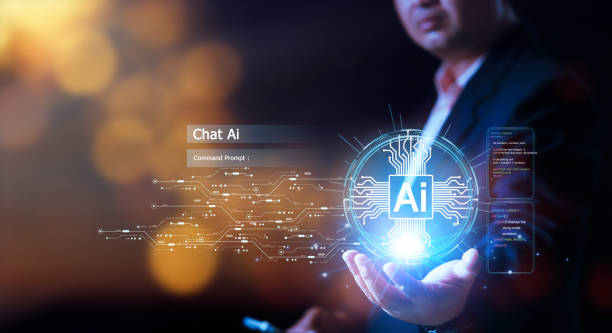
The future of artificial intelligence robots is very bright and full of potential.
With the ever-increasing advancement of technology, robots are expected to become smarter, more capable, and more versatile.
In the future, robots will be able to perform more complex tasks, interact with humans more naturally, and even understand emotions.
Artificial intelligence robots will increasingly integrate into our daily lives and play an important role in solving problems and improving the quality of life.
Some predictions indicate that in the future, robots can also operate in fields such as education, scientific research, and even art.
It is also expected that robots will be used in space and in hazardous environments.
However, the development of artificial intelligence robots also comes with challenges.
Issues related to ethics, safety, and security must be carefully considered to prevent misuse of this technology.
Tired of your online store not generating as much revenue as its potential allows? Rasaweb, a specialist in designing professional online stores, solves this problem for good!
✅ Increase sales and revenue dramatically
✅ High loading speed and exceptional user experience
⚡ Get a free consultation for online store website design
Ethical and Social Challenges Related to Artificial Intelligence Robots
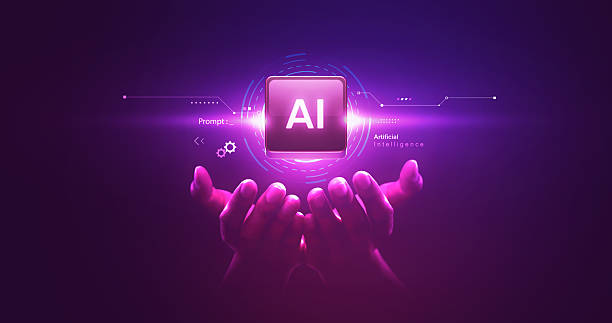
The development of artificial intelligence robots, in addition to the advantages and opportunities it creates, also brings important ethical and social challenges.
These challenges must be carefully considered to prevent potential negative consequences.
One of the most important challenges is the issue of job loss.
With the automation of processes and the replacement of humans with robots, many people may lose their jobs.
This issue can lead to increased unemployment, inequality, and other social problems.
Another challenge is the issue of discrimination.
Artificial intelligence algorithms may be trained on biased data and make decisions that are discriminatory.
This can lead to inequality in access to opportunities and services.
Also, the issue of accountability is raised.
If an artificial intelligence robot makes a mistake, who will be responsible? Should the robot’s manufacturer, the robot’s user, or the robot itself be held accountable?
In addition, issues related to privacy, security, and control must also be considered.
How is the data collected by robots protected? Can robots be misused? Who has control over the robots?
How to Build an Artificial Intelligence Robot? (Introductory)
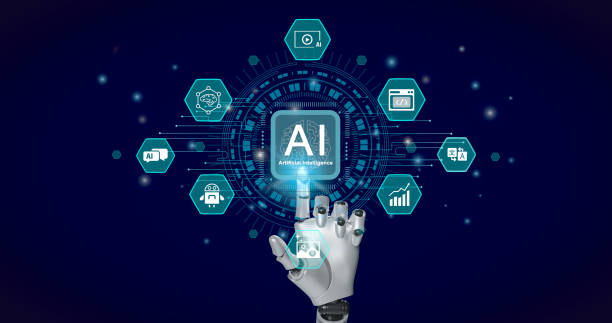
Building an artificial intelligence robot is a complex and challenging project that requires various knowledge and skills.
But with a step-by-step approach and the use of appropriate tools and resources, you can build a simple artificial intelligence robot.
Step 1: Planning
First, you need to define your purpose for building the robot.
What do you want the robot to do? What capabilities should it have? By answering these questions, you can create an overall plan for your robot.
Step 2: Collecting Parts
To build a robot, you need various parts, including a body, motors, sensors, a microcontroller, and a power supply.
You can purchase these parts from electronics stores or online.
Step 3: Programming
In order for the robot to perform its tasks, you need to program it.
You can use various programming languages such as Python, C++, or Java.
You can also use artificial intelligence libraries and frameworks such as TensorFlow and PyTorch.
Step 4: Testing and Improvement
After building and programming the robot, you need to test it and improve its performance.
By performing various tests, you can identify problems and weaknesses of the robot and fix them.
Note that building an artificial intelligence robot requires patience, perseverance, and continuous learning.
Case Studies of Successful Artificial Intelligence Robots in the Real World
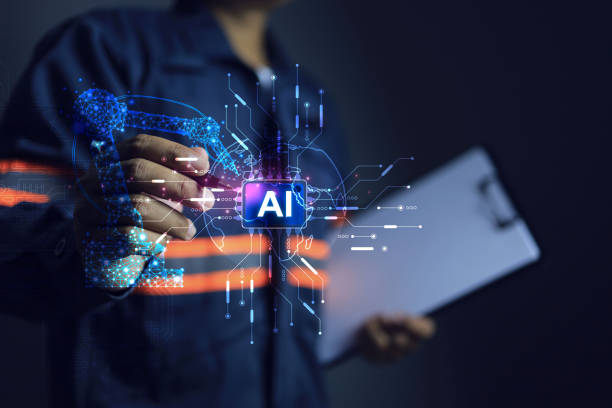
In the real world, there are numerous artificial intelligence robots that have achieved significant success in various fields.
Here, we will examine a few examples of these robots.
Robot Sophia
Sophia is a humanoid robot developed by Hanson Robotics.
Sophia is able to interact with humans, answer questions, and even express emotions.
Sophia is recognized as an ambassador of technology and innovation around the world.
Robot Atlas
Atlas is a humanoid robot developed by Boston Dynamics.
Atlas is able to move in complex environments, overcome obstacles, and perform various tasks.
Atlas is recognized as a symbol of robotic advancements in the world.
Robot AlphaGo
AlphaGo is a computer program developed by Google DeepMind.
AlphaGo is able to play the game of Go at a professional level, and in 2016, it was able to defeat Lee Sedol, the world champion in this game.
AlphaGo is recognized as a turning point in the history of artificial intelligence.
These examples show that artificial intelligence robots have high potential for solving problems and improving people’s lives.
| Robot Name | Manufacturer | Application |
|---|---|---|
| Sophia | Hanson Robotics | Human interaction, technology ambassador |
| Atlas | Boston Dynamics | Moving in complex environments, performing various tasks |
| AlphaGo | Google DeepMind | Playing Go |
The Impact of Artificial Intelligence Robots on the Economy and Labor Market
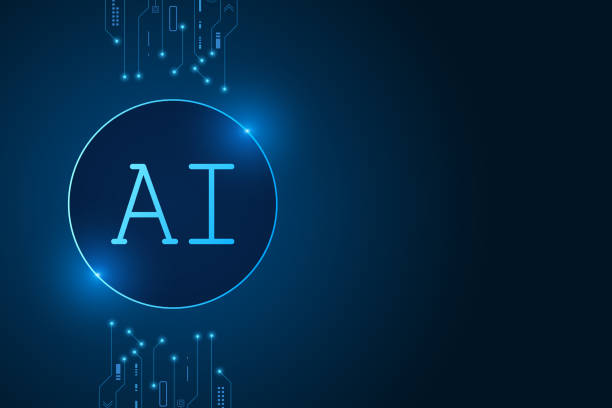
Artificial intelligence robots have a significant impact on the economy and labor market.
Automation of processes and replacement of humans with robots can lead to increased productivity, reduced costs, and improved product quality.
However, these developments can also have negative consequences, including job losses and increased inequality.
Some experts predict that in the future, many repetitive and routine jobs will be performed by robots.
This can lead to widespread workforce displacement and the need for retraining and skills upgrading.
On the other hand, the development of artificial intelligence robots can also create new job opportunities.
Jobs related to the design, construction, maintenance, and programming of robots, as well as jobs related to data analysis and the development of artificial intelligence algorithms, are growing.
In order to benefit from the advantages of artificial intelligence robots and prevent their negative consequences, appropriate policies in the areas of education, employment, and social support must be adopted.
Are you tired of losing customers who visit your site to shop?
Rasaweb is your expert solution for having a successful online store.
✅ Significantly increase your online sales
✅ Create trust and professional branding with customers⚡ Get a free consultation from Rasaweb experts!
Legal Issues Related to Artificial Intelligence Robots
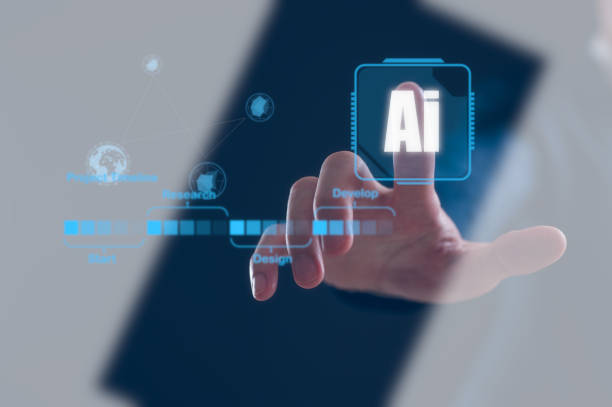
The development of artificial intelligence robots raises new legal issues that require review and the development of new laws.
One of the most important issues is accountability.
If an artificial intelligence robot causes damage, who will be responsible? Should the robot’s manufacturer, the robot’s user, or the robot itself be held accountable?
Another issue is intellectual property.
Can an artificial intelligence robot own its artwork or inventions? Should artwork or inventions created by robots be protected by copyright law?
Also, issues related to privacy, security, and data usage must be considered.
How is the data collected by robots protected? Can robots be used to collect personal information? Can robots be misused?
To solve these issues, there is a need to develop new laws and create an appropriate legal framework for artificial intelligence robots.
These laws must be designed to protect the rights and freedoms of individuals and at the same time encourage innovation and technological development.
Learning and Training Resources for Robotics and Artificial Intelligence
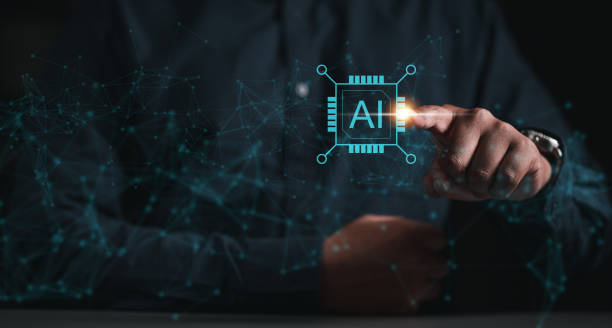
Learning robotics and artificial intelligence can be an exciting and opportunity-filled path.
Fortunately, there are plenty of resources available to help you on this journey.
Online Courses
Online learning platforms like Coursera, edX, and Udacity offer a variety of courses in robotics and artificial intelligence.
These courses can be a great starting point for learning basic and advanced concepts.
Books and Articles
Books and scientific articles can be a valuable resource for learning deeper concepts in robotics and artificial intelligence.
You can obtain the books and articles you need from libraries, bookstores, or online.
Online Forums and Groups
Participating in online forums and groups can help you connect with other enthusiasts and experts in the field of robotics and artificial intelligence and benefit from their experiences.
Practical Projects
The best way to learn robotics and artificial intelligence is to do practical projects.
By building simple and complex robots, you can improve your skills and put your knowledge to use.
Many free resources are available for learning AI robots, including YouTube videos, educational blogs, and open-source projects.
With a little effort and perseverance, you can succeed in this field.
Frequently Asked Questions
| Question | Answer |
|---|---|
| What is an Artificial Intelligence Robot? | It is a robot that uses artificial intelligence capabilities to understand the environment, reason, learn, and make decisions to perform complex tasks independently. |
| What is the main difference between a regular robot and an artificial intelligence robot? | AI robots can learn and adapt to their environment, while regular robots typically operate based on fixed and pre-determined programming. |
| In what areas are AI robots used? | In areas such as industry (production lines), medicine (robotic surgery), services (customer support, smart vacuum cleaners), exploration (space and underwater), and entertainment. |
| How do AI robots learn? | They acquire new skills through machine learning (ML) and deep learning algorithms by analyzing large datasets and identifying patterns. |
| Can AI robots have emotions? | Currently, no. They can identify or simulate emotions, but they do not have a real experience of emotions like humans. |
| What are the most important advantages of using AI robots? | Increased productivity, reduced human error, performing dangerous or repetitive tasks, and providing innovative and efficient services. |
| What challenges are there in developing AI robots? | The need for abundant and high-quality data, the complexity of algorithms, ethical issues, cybersecurity, and high research and development costs. |
| Are AI robots dangerous to humans? | No, if safe design principles and ethical regulations are followed. Concerns are more related to social and economic impacts such as changes in the labor market. |
| What is an example of an AI robot in everyday life? | Smart vacuum cleaner robots (such as Roomba) that automatically map and clean the house, or smart voice assistants (such as Siri and Alexa). |
| How is the future of AI robots predicted? | They are expected to become smarter, more autonomous, and capable of more complex interaction with humans, and play a more prominent role in industry, medicine, transportation, and everyday life. |
And other services of Rasa Web advertising agency in the field of advertising
Smart Conversion Rate Optimization: A fast and efficient solution for online growth with a focus on Google Ads management.
Smart Custom Software: Professional optimization to increase website traffic using Google Ads management.
Smart UI/UX: A combination of creativity and technology to improve SEO ranking through custom programming.
Smart Digital Branding: A combination of creativity and technology to increase click-through rate by customizing user experience.
Smart Advertising Campaign: An effective tool for managing campaigns with the help of customizing user experience.
And over hundreds of other services in the field of internet advertising, advertising consulting, and organizational solutions
Internet Advertising | Advertising Strategy | Advertorial
Sources
Artificial Intelligence Robots – Virgool
,What is Artificial Intelligence and What are its Applications? – Webidoo Digital Marketing Agency
,Smart Robot, Smart Robot – Aparat
,What is the application of artificial intelligence in robots? – Hamrahe Aval
? With Rasaweb Afarin Digital Marketing Agency, your business will reach its peak in the online world! We create a powerful presence for you by providing innovative SEO solutions, professional social media management, and multilingual website design.
📍 Tehran, Mirdamad Street, next to the Central Bank, South Kazerun Alley, Ramin Alley No. 6

